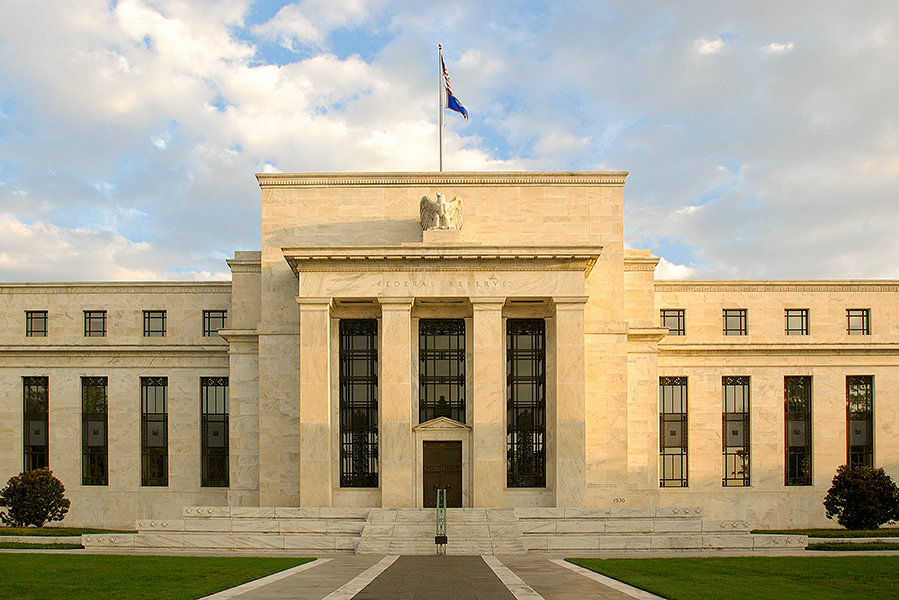.png)
Goldman Sachs and the Fed’s Softer Stress Tests: A Capital Gamechanger
The Fed’s relaxed stress test scenarios cut projected losses sharply, boosting capital at the US banks. India’s system can draw key lessons.


Rahul Ghosh is a banking and risk expert who advises banks, corporates, and central banks, and builds tech solutions for risk management. He authored two books on risk.
August 14, 2025 at 11:29 AM IST
Exactly one year ago, in July 2024, Goldman Sachs faced a stark shortfall, needing over $6 billion in additional capital to pass the Federal Reserve’s annual stress test. This July, the very same bank sits on an excess of over $15 billion. The shift is not a quirk of accounting but the direct result of a dramatic reduction of over $20 billion in projected stress test losses compared with last year.
The Federal Reserve subjects major US banks to an annual set of stress tests to simulate severe adverse scenarios in both economic and market conditions. The results determine how much capital a bank must hold. Losses can be trimmed in two broad ways: by Fed adjusting the severity of the test scenarios themselves, or by Bank materially changing its risk exposures. This year, the Fed has done the former.
The US banking industry has long argued that the Fed’s scenarios were excessively punitive, with knock-on effects for both capital requirements and shareholder returns. In 2025, the regulator made relaxations across multiple stress factors.
Balance Sheet
Goldman’s balance sheet left it well-placed to benefit from these changes. Its trading portfolio accounts for roughly one-third of its $1.68 trillion in assets, with off-balance-sheet trading exposures often far larger than those on books. Maximum trading gains or losses tend to swing most sharply with equity and foreign exchange cash and derivative products.
In the 2025 stress test, projected scenarios for equities were eased by one-tenth, as were stresses on Asian emerging market currencies, to which Goldman presumably has significant exposure. Reduced market shocks also compress counterparty credit losses: when measures such as the value-at-risk on market instruments fall, the potential exposure to trading counterparties drops alongside.
Real estate adds another dimension. Loans to the sector make up over a quarter of Goldman’s loan book. The Fed’s gentler assumptions on both house prices and commercial real estate prices directly lowered the projected loan losses.
The other way to reduce losses is to shrink risky positions involving market and credit risks, through a combination of altering positions and entering into hedges. Goldman’s results show trading and counterparty losses practically vanishing in the 2025 stress test, down from a staggering $18 billion last year. This cannot be achieved without a deep overhaul of the trading book and counterparty risk management.
Across the US banking system, performance improved markedly. The 2024 stress tests for the top two dozen banks implied combined losses of over $300 billion. In 2025, the figure fell by $135 billion to $187 billion. JPMorgan, for example, saw projected losses decline 36% to $25 billion, helped by softer stresses in the real estate sector, which accounts for about two-fifths of its direct and indirect exposure.
The Fed’s approach underscores two important points. First, its stress tests are both methodical and transparent, with clearly articulated modelling and disclosures. Second, the results feed directly into capital requirements, in keeping with the Basel capital framework’s principle that requires regular supervisory review and reassessment of capital. This contrasts sharply with most other jurisdictions, where supervisory stress tests gauge systemic resilience but stop short of linking the results directly to actual capital requirements.
There are several takeaways for India.
First, stress test scenarios should cover the entire risk profile of a bank, instead of limiting them to select measures. Second, capital requirements should be directly linked to stress test outcomes. Third, detailed stress test results for individual banks should be made part of public disclosures. Even incremental steps in this direction would be a meaningful improvement.
The US experience this year shows that the severity of the scenarios, the composition of the balance sheet, and the capacity for risk management adjustments can together transform a bank’s capital position in under 12 months. India’s supervisory framework has room to embrace that degree of agility, without diluting prudential safeguards.



